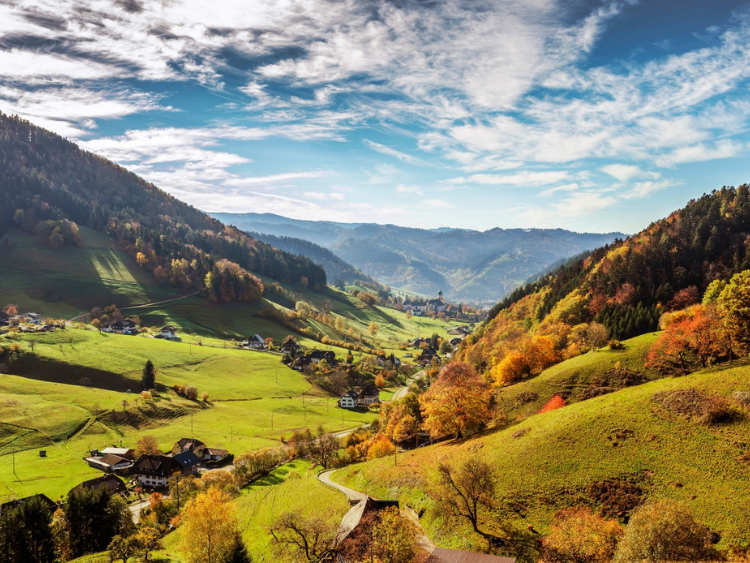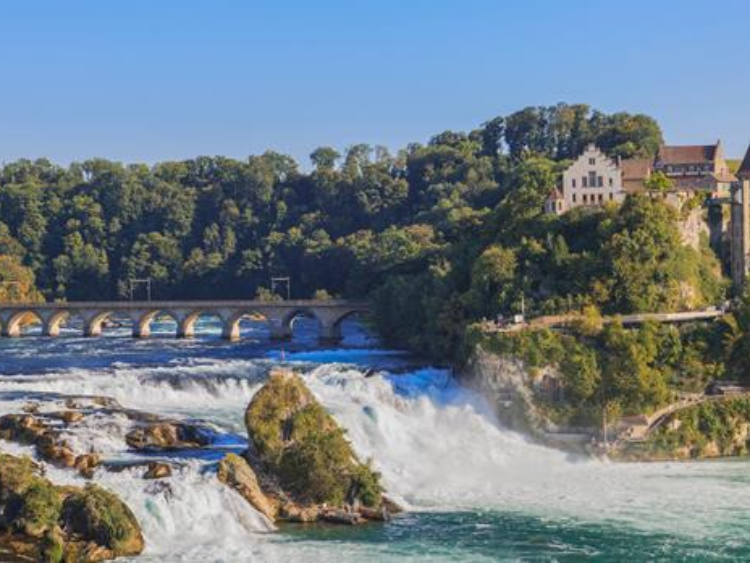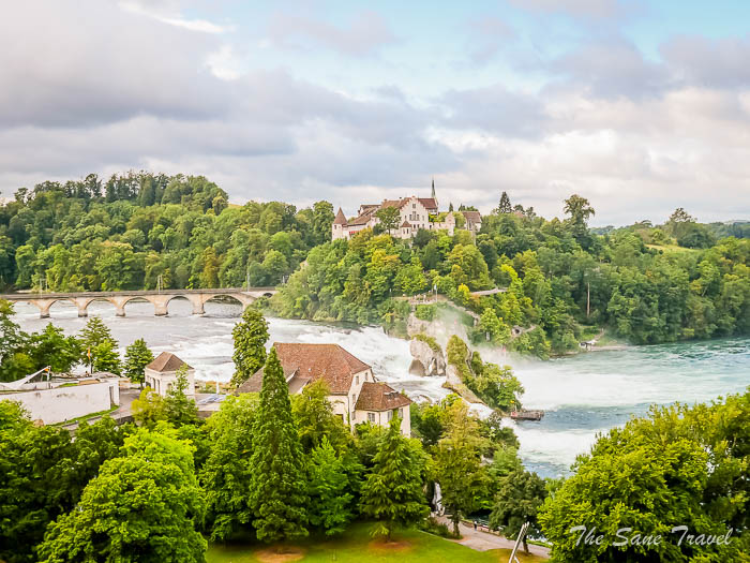
Lake Constance, also known as Bodensee in German, is situated at the northern foot of the Alps, straddling three countries: Germany, Austria, and Switzerland. The portion of Lake Constance that lies within Germany is located in the federal state of Baden-Württemberg. Specifically, in Baden-Württemberg, it encompasses parts of the districts of Bodenseekreis, Konstanz, and Ravensburg. Major German towns along the lake include Friedrichshafen, Konstanz, and Meersburg. The lake serves as a popular destination for tourism, water sports, and recreation, offering picturesque views and a variety of activities.

Lake Constance, or Bodensee, is a glacial lake that formed during the last Ice Age, specifically the Würm glaciation. The Würm glaciation began around 115,000 years ago and ended approximately 11,700 years ago. As the glaciers retreated at the end of this period, meltwater filled the basins that had been carved out by the ice, leading to the formation of Lake Constance.
The precise timing of the lake's formation is generally estimated to be around 10,000 to 14,000 years ago, aligning with the end of the last glacial period. During this time, large glaciers in the Alps melted, and their meltwater accumulated in the basins, forming what is now known as Lake Constance.
Here are some key points about its formation and geological history:
1. **Glacial Carving**: The lake basin was carved out by the movement of glaciers. These glaciers acted like massive natural bulldozers, eroding the land beneath them as they advanced and retreated over thousands of years.
2. **Meltwater Accumulation**: As the climate warmed at the end of the last Ice Age, glaciers began to melt, releasing vast amounts of water. This meltwater filled the basins left by the glaciers, creating lakes.
3. **Geological Activity**: The region around Lake Constance has experienced significant geological activity, including tectonic movements and sediment deposition, which have further shaped the lake over millennia.
4. **Present-Day Features**: Today, Lake Constance is one of the largest lakes in Central Europe, with a surface area of about 536 square kilometers (207 square miles). It has a maximum depth of approximately 254 meters (833 feet).
Lake Constance is not only a significant natural feature but also a historically important region. It has been inhabited since prehistoric times, with evidence of early human settlements around its shores dating back to the Neolithic period.

Lake Constance (Bodensee) was not "invented" by a single individual; rather, it is a natural feature that formed through geological processes during the last Ice Age, specifically the Würm glaciation. The lake's creation was a result of glacial activity, including the carving of the basin by advancing glaciers and the subsequent filling of the basin with meltwater as the glaciers retreated.
Therefore, Lake Constance was not created by human intervention or invention but rather through natural geological processes over thousands of years. It is a product of the Earth's natural history rather than a human-made invention.

Lake Constance is known as "Bodensee" in German. The name "Bodensee" has its origins in the medieval Latin term "lacus Bodamicus" or "Bodamicus Lacus," which referred to the lake. Over time, this Latin name evolved into "Bodensee" in German.
The name "Constance" is derived from the nearby city of Konstanz (Constance in English), which is situated on the southern shore of the lake. The city of Konstanz has a long history dating back to Roman times and has been a prominent settlement in the region for centuries.
Therefore, the lake is commonly referred to as "Lake Constance" in English, with "Constance" being a reference to the nearby city, while in German, it is called "Bodensee," reflecting its historical Latin origins.




Lake Constance and its surrounding region offer a variety of hiking opportunities that make it appealing for hiking enthusiasts. Here are several reasons why it's a great destination for hikers:
1. **Scenic Beauty**: The landscape around Lake Constance is stunning, with panoramic views of the lake, the Alps, and picturesque countryside. Hikers can enjoy breathtaking vistas as they traverse trails that wind through forests, meadows, and along the lakeshore.
2. **Diverse Terrain**: The terrain around Lake Constance varies, offering diverse hiking experiences. Whether you prefer gentle lakeside strolls, challenging mountain ascents, or tranquil forest paths, there are trails suited to all skill levels and preferences.
3. **Well-Marked Trails**: The hiking trails around Lake Constance are well-marked and maintained, making it easy for hikers to navigate and explore the area safely. Many trails are part of established hiking networks, such as the Bodensee-Königssee Trail or the E1 European long-distance path.
4. **Cultural Attractions**: In addition to natural beauty, the region boasts numerous cultural attractions along hiking routes, including historic towns, castles, churches, and museums. Hikers can immerse themselves in the rich history and culture of the area while enjoying their outdoor adventures.
5. **Accessibility**: Lake Constance is easily accessible by public transportation, including trains, buses, and ferries, making it convenient for hikers to reach trailheads and explore different parts of the region without needing a car.
6. **Outdoor Activities**: In addition to hiking, Lake Constance offers a wide range of outdoor activities, including cycling, water sports, paragliding, and more. Hikers can complement their hiking adventures with other recreational pursuits, adding to the overall experience.
Overall, Lake Constance provides a perfect blend of natural beauty, cultural heritage, and outdoor adventure, making it an ideal destination for hiking lovers seeking memorable experiences in a breathtaking setting.







Hiking around Lake Constance (Bodensee) can indeed be enjoyed throughout the year, but the best time for hiking may vary depending on personal preferences and the specific experiences you're seeking.
1. **Spring (March to May)**: Spring brings mild temperatures, blooming wildflowers, and lush greenery, making it a delightful time for hiking. Trails are less crowded compared to summer, and you can enjoy the awakening of nature.
2. **Summer (June to August)**: Summer offers warm temperatures ideal for hiking, swimming, and enjoying outdoor activities. The days are long, allowing for extended hiking adventures. However, popular trails and tourist areas can be crowded during peak season.
3. **Autumn (September to November)**: Autumn brings stunning foliage as the leaves change color, creating a picturesque backdrop for hiking. The weather is generally mild, and trails are less crowded compared to summer. It's an excellent time for peaceful hikes and enjoying the beauty of the changing seasons.
4. **Winter (December to February)**: While the region around Lake Constance doesn't typically experience harsh winters, hiking during this time may require appropriate clothing and gear, especially at higher elevations. Some trails may be covered in snow or icy conditions, but winter hiking can offer solitude and unique scenery.
Overall, Lake Constance offers hiking opportunities year-round, with each season providing its own charm and experiences. It's essential to consider factors such as weather, trail conditions, and personal preferences when planning your hiking adventures. Additionally, always check local weather forecasts and trail conditions before embarking on any hike.